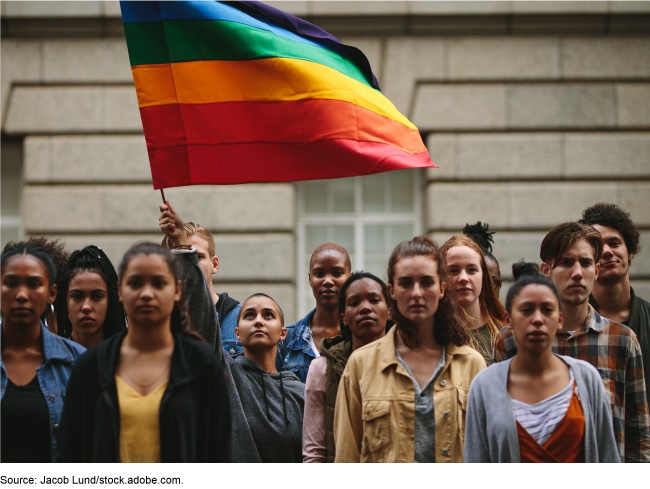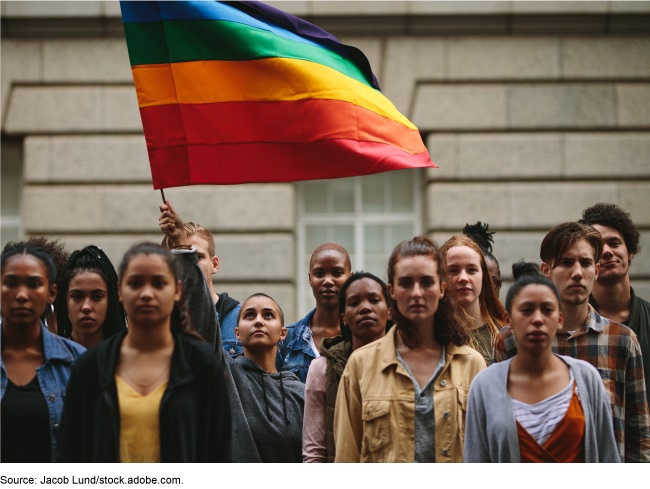
Pride Month is meant to mark a turning point for gay rights and recognition efforts by the LGBTQ+ community. Each June—to align with the June 27, 1969 Stonewall Uprising in Manhattan—Pride is celebrated with picnics and parades, while also acknowledging some of the challenges still facing people who identify as LGBTQ+.
In today’s blog post, we look at our recent reports about two particularly vulnerable groups of LGBTQ+ people—youth facing homelessness and veterans.
Struggles for LGBTQ+ youth who become homeless
LGBTQ+ youth may need to leave their homes for a range of reasons, including because of abuse or neglect perpetrated by their families. These youth, and particularly transgender youth, are more likely to suffer from abuse and neglect compared to other youth.
LGBTQ+ youth who experience homelessness often lack needed services, as we found in our recent report. Service providers and other experts told us that there is a lack of resources that are specific to or appropriate for these youth through the Department of Housing and Urban Development’s (HUD) homelessness programs. This can make it particularly challenging for these youth to obtain housing. They also said that having access to services that are welcoming and affirming is important for helping these youth feel comfortable seeking help. Some also discussed other challenges facing LGBTQ+ youth experiencing homelessness, such as the danger of becoming victims of hate crimes, particularly for transgender youth.
We found that the Department of Health and Human Services (HHS) and HUD could help strengthen local systems that serve LGBTQ+ and other homeless youth by providing additional information to communities on how to help youth obtain housing through these systems, among other topics.
Struggles for LGBTQ+ veterans
LGBTQ+ veterans may experience higher rates of depression and more frequent thoughts of suicide, according to the Department of Veterans Affairs (VA). But we found that information that could help the VA help these veterans was not collected.
According to the VA, 89% of veterans’ records lack gender identity data. Having this information could help the VA identify common health conditions and outcomes, and provide increased screenings or other appropriate health care services to meet the needs of LGBTQ+ veterans.
For our report, the VA told us that health care providers may record veterans’ sexual orientation during health visits. But this information isn’t recorded in a standardized way that would allow for analysis of health outcomes for the entire population of lesbian, gay, and bisexual veterans receiving VA services. This limits VA’s ability to address health disparities and improve outcomes for these veterans.
In our report, we made four recommendations to the VA to help improve its efforts. These included actions like consistently collecting data on gender identity and sexual orientation, and analyzing this information to help assess health care challenges facing LGBTQ+ veterans. This could help improve outreach and aid to this community. VA has begun to take steps to address our recommendations, such as by consistently collecting information on veterans’ gender identities. Find out more by reading our full report.








